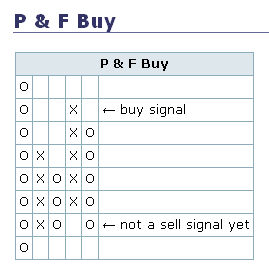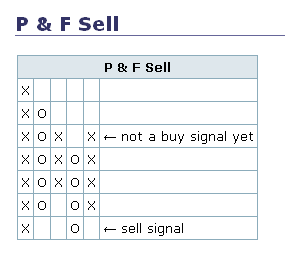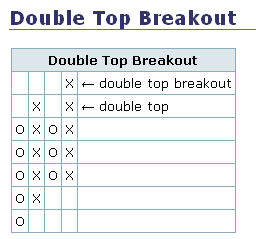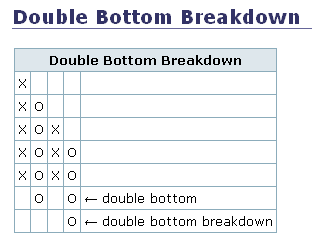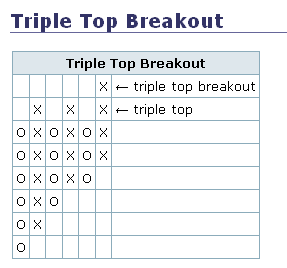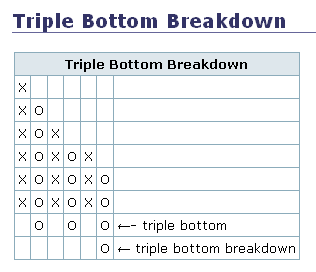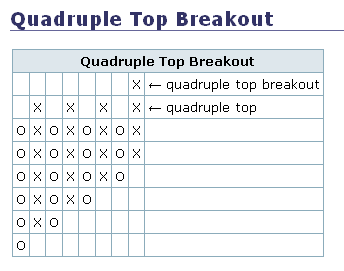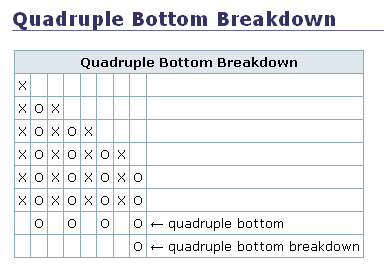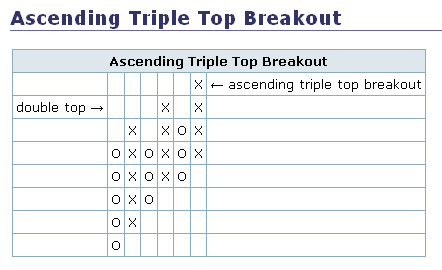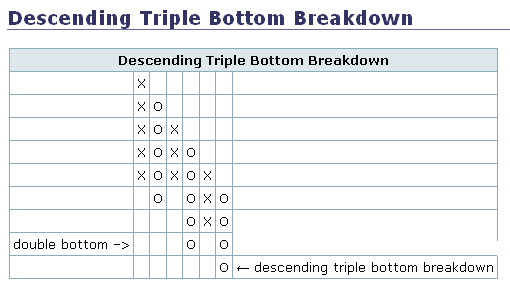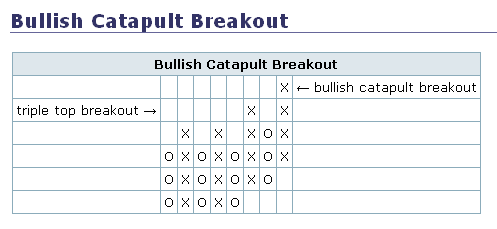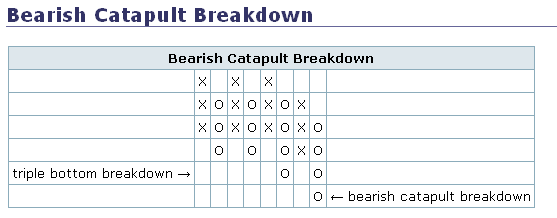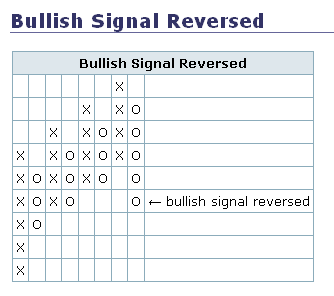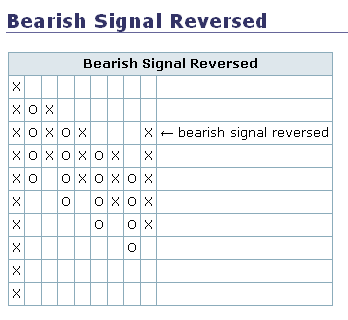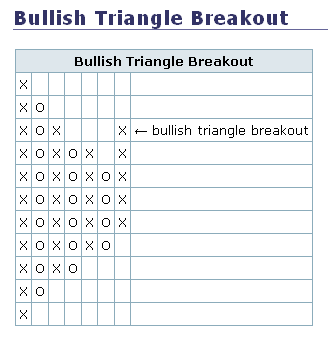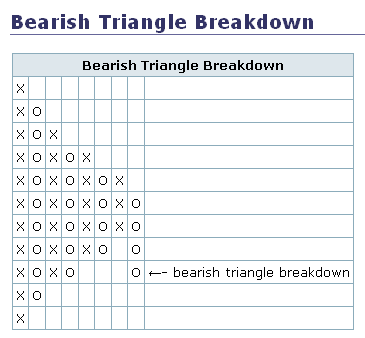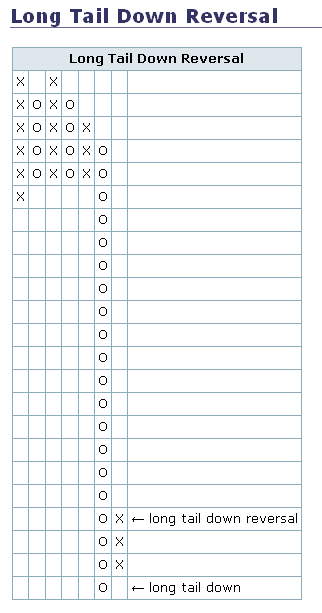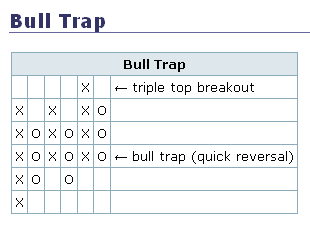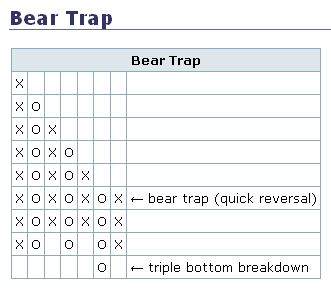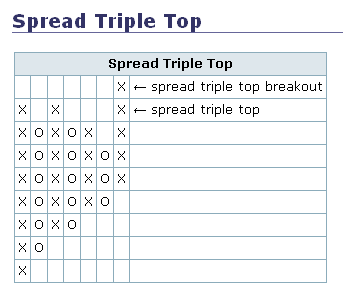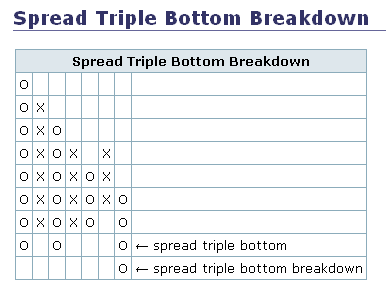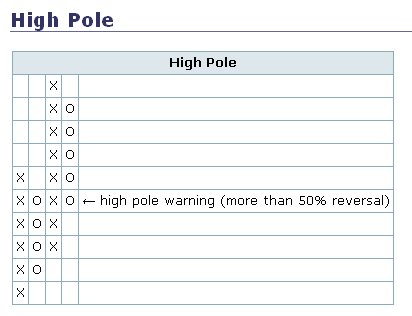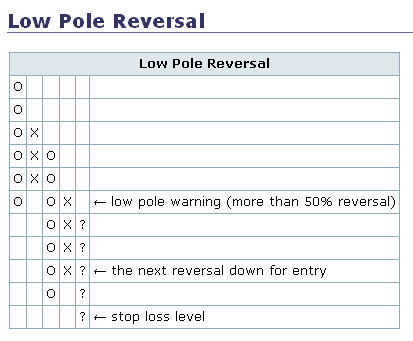All I've got to offer as a start is from DecisionPoint:
What Is A P&F Chart?
P&F Chart The point and figure chart is a study of pure price movement in that time is not taken into consideration while plotting the price action. Since only price changes are recorded, if no price change occurs then the chart is left untouched.
Point & Figure charts use rising columns of X's and descending columns of O's to represent these price movements.
What an investor sees when looking at a P&F chart is the underlying supply and demand of the security. The columns of X's illustrate demand exceeding supply (rally), and the columns of O's illustrate supply exceeding demand (decline).
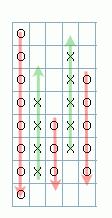
This article describes the mechanics of using P&F Charts.
How Are P&F Charts Calculated?
As stated above, Point & Figure charts show an "X" when prices rise by the amount of the "box size" (a value you specify) and show an "O" when prices fall by the amount of the box size. If prices rise or fall by an amount that is less than the box size, no X's or O's are drawn.
Each column contains a stack of either X's or O's, but rarely both (using a 1 box reversal can result in an X and O stack). Columns will always alternate between X's and O's, and in order to change columns, prices must reverse by the "reversal amount" (another value you specify) multiplied by the box size. For example, if the box size is 5 points and the reversal amount is 3 boxes, then prices must reverse direction 15 points (5 x 3) in order to change columns. If you are in a column of X's, the price must fall 15 points to change to a column of O's. If you are in a column of O's, the price must rise 15 points to change to a column of X's.
The columns of X's and O's represent price trends. So when a column changes, it likewise signals a change in the trend of prices. When a new column of X's appears, it shows that prices are rallying higher. When a new column of Os appears, it shows that prices are moving lower.
Because prices must reverse direction by the reversal amount, the minimum number of X's or Os that can appear in a column is equal to the "reversal amount."
It is common practice is to use the high and low prices (not just the close) to decide if prices have changed enough to display a new box.
Why Use A Point & Figure Chart?
While the SharpCharts workbench is a great tool for charting a security over a period of time, sometimes all an investor is interested in is the actual price movement. P&F charts are great for observing active market activity, and as such are very helpful in identifying support/resistance lines, buy/sell signals, and trendlines.
P&F charts are also very flexible in that they can easily be made more or less sensitive to price changes to discern between long and short term trends. By varying box and reversal sizes, these charts can be adapted to almost any need. There are also many different ways these charts can be used for entry and exit points. As such, all types of investors can benefit from an applied understanding of P&F charting.
Why Use A SharpCharts P&F Chart?
There are two types of SharpCharts P&F charts: Graphical and Text.
A Graphical P&F chart is created as a graphical image. It can provide more information and flexibility by offering more workbench tools than the text charts. Furthermore, graphical charts look great and can be stored inside of Favorite chart lists.
The Text (or "Classical") chart is a simpler style of P&F charting that uses the old-fashioned visual format. The Text P&F chart is created as a collection of text characters and can be viewed in any web browser.

This is an example of what a typical P&F chart might look like. It has the standard Chart Scale values and Chart Attributes with the "Trend Lines" overlay selected. Notice the time scale on the horizontal axis is not linear, P&F Charting tracks price action whenever it may occur.
ABC 123
Here we see rising columns of X's and falling columns of O's with numbers (1 - 9) and letters (A, B, C) placed within the columns. The number and letters are simply used as monthly indicators, allowing the user to have at least a rough idea of when these price movements occurred aside from the given year markers at the bottom. The numbers 1 - 9 correspond to months January thru September, and to save space, A B & C were assigned to October, November, and December respectively. Therefore, if you saw a "2" in the place of an X, that would indicate that the price rose by the box value in the month of February. Keep in mind that the "2" would not necessarily indicate February 1, it simply signifies that the price movement occurred in the month of February.
Buy/Sell Signals
Upside and downside breakouts can be used as buy and sell signals respectively, and are also vital in the construction of trend lines. When a column of X's rises one box above the top of a previous X column, a buy signal is given. Contrarily, when a column of O's declines one box below a previous O column, a sell signal is given. Decreasing the Box Size will yield more signals as the charting will become more volatile.
Trend Lines
P&F trend lines do not follow the exact same conventions as trend lines for bar charts, and are much less subjective. First, they do not necessarily have to connect previous tops or bottoms. Second, the way they are constructed will always result in them being charted at 45 degree angles (or 135 degrees if decreasing). The red lines represent bearish resistance while the blue lines represent bullish support. From the example chart, notice how the blue support lines are constructed after a buy signal and the red resistance lines are constructed after a sell signal.
Price Objectives
Our P&F charts display a price objective on the vertical price scale as PO. A P&F price objective is the price that a stock should reach based on recent P&F chart signals. Price objectives should not be used as the sole reason for buying or selling a stock - they function simply as a guide based on what the current P&F chart is saying. Stocks frequently move past the price objective and just as frequently reverse before getting to the price objective. The best way to use a price objective is as a cautionary sign - if prices get to the price objective, it might be prudent to monitor the stock more closely and move stops closer in case the move is done.



